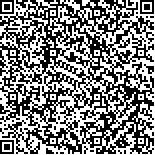| 引用本文: | 刘晓妍,朱思庆,张丽花,孙金杰,杜丽娜,金义光.治疗深Ⅱ度烧伤的同轴静电纺丝纳米纤维的研究[J].中国现代应用药学,2019,36(7):773-780. |
| LIU Xiaoyan,ZHU Siqing,ZHANG Lihua,SUN Jinjie,DU Lina,JIN Yiguang.Study on Coaxially Electrospinning Nanofibers for Deep Partial-thickness Burns[J].Chin J Mod Appl Pharm(中国现代应用药学),2019,36(7):773-780. |
|
| |
|
|
| 本文已被:浏览 2660次 下载 1502次 |

码上扫一扫! |
|
|
| 治疗深Ⅱ度烧伤的同轴静电纺丝纳米纤维的研究 |
|
刘晓妍1, 朱思庆1,2, 张丽花1,3, 孙金杰4, 杜丽娜1,2,3, 金义光1,2
|
|
1.军事科学院军事医学研究院辐射医学研究所抗辐射药物研究室, 北京 100850;2.安徽医科大学, 合肥 230001;3.山东中医药大学, 济南 250355;4.空军特色医学中心, 北京 100142
|
|
| 摘要: |
| 目的 研究海藻酸钠/聚乙烯醇(polyvinyl alcohol,PVA)/壳聚糖同轴纳米纤维对大鼠深Ⅱ度烧伤模型的促愈合作用。方法 采用同轴静电纺丝技术制备由海藻酸钠/PVA/壳聚糖组成的同轴纳米纤维,扫描电镜、透射电镜、X射线衍射技术进行性质表征,体外实验考察其吸水性、抑菌性能。建立SD大鼠深Ⅱ度烧伤创面模型,随机分成模型组和同轴纳米纤维组。观察大鼠创面愈合情况、病理学改变,用免疫组化法检测创面血管内皮生长因子(vascular endothelial growth factor,VEGF)、分化簇31(differentiation cluster 31,CD31)和增殖细胞核抗原(proliferating cell nuclear antigen,PCNA)的表达,ELISA测定肿瘤坏死因子(tumor necrosis factor-α,TNF-α)和白介素-6(interleukin-6,IL-6)水平。结果 同轴纳米纤维具有明显的核壳结构,吸水性好,体外抑菌作用明显。在治疗后5,14,21 d观察到炎性细胞浸润减少、胶原蛋白生成增加。与模型组比较,同轴纳米纤维组伤口愈合时间缩短,伤口愈合率高(P<0.01),炎性细胞浸润减少,胶原蛋白生成增加。同轴纳米纤维能有效促进VEGF、CD31、PCNA表达,降低炎症因子TNF-α和IL-6水平(P<0.01)。结论 通过促进创面细胞增殖及胶原的合成,海藻酸钠/PVA/壳聚糖同轴纳米纤维能有效促进深Ⅱ度烧伤创口愈合,可作为一种新型治疗深Ⅱ度烧伤的外用敷料。 |
| 关键词: 海藻酸钠 烧伤 壳聚糖 同轴纳米纤维 静电纺丝技术 伤口愈合 |
| DOI:10.13748/j.cnki.issn1007-7693.2019.07.001 |
| 分类号:R285.5 |
| 基金项目:国家自然科学基金项目(81441095) |
|
| Study on Coaxially Electrospinning Nanofibers for Deep Partial-thickness Burns |
|
LIU Xiaoyan1, ZHU Siqing1,2, ZHANG Lihua1,3, SUN Jinjie4, DU Lina1,2,3, JIN Yiguang1,2
|
|
1.Department of Pharmaceutical Sciences, Beijing Institute of Radiation Medicine, Beijing 100850, China;2.Anhui Medical University, Hefei 230001, China;3.Shandong University of Traditional Chinese Medicine, Jinan 250355, China;4.Air Force Medical Center, PLA, Beijing 100142, China
|
| Abstract: |
| OBJECTIVE To observe the effect of alginate/polyvinyl alcohol (PVA)/chitosan coaxial nanofibers on healing of deep partial-thickness burn in rats. METHODS Coaxial nanofibers composed of sodium alginate/PVA/chitosan were prepared with coaxial electrospinning technology, Scanning electron microscopy, transmission electron microscopy and X-ray diffraction techniques were used to characterize morphology and composition. Water absorption and antibacterial ability in vitro were evaluated. Sprague-Dawley rats with deep partial-thickness burns were randomly divided into 2 groups, the model group without treatment and the coaxial nanofiber treatment group. Wound healing and pathological slides were observed. The expression of vascular endothelial growth factor (VEGF), differentiation cluster 31 (CD31) and proliferating cell nuclear antigen (PCNA) were determined by immunohistochemical staining. Tumor necrosis factor-α (TNF-α) and interleukin-6 (IL-6) were determined by ELISA. RESULTS Obvious core-shell structure of coxial nanofibers were observed. Coaxial nanofibers were highly absorbent and had good effect in bacterial inhibition. Low infiltration of inflammatory cells and much collagen formation in the wound tissue were observed by H.E. staining and Masson staining on the 5th, 14th and 21st day after burn. Compared with the model group, coaxial nanofiber group shortened wound healing time, increased wound healing rate (P<0.01) with less inflammatory cell infiltration and promoted collagen production. Coaxial nanofibers could effectively increase expression of VEGF, CD 31, PCNA, and decrease TNF-α and IL-6 levels (P<0.01). CONCLUSION Sodium alginate/PVA/chitosan coaxial nanofibers can effectively promote the healing of deep burn wounds by promoting the proliferation of wound cells and synthesis of collagen. It can be used as a novel wound dressing for treatment of deep partial-thickness burns. |
| Key words: alginate burn chitosan coaxial nanofibers electrospinning wound healing |
|
|
|
|
